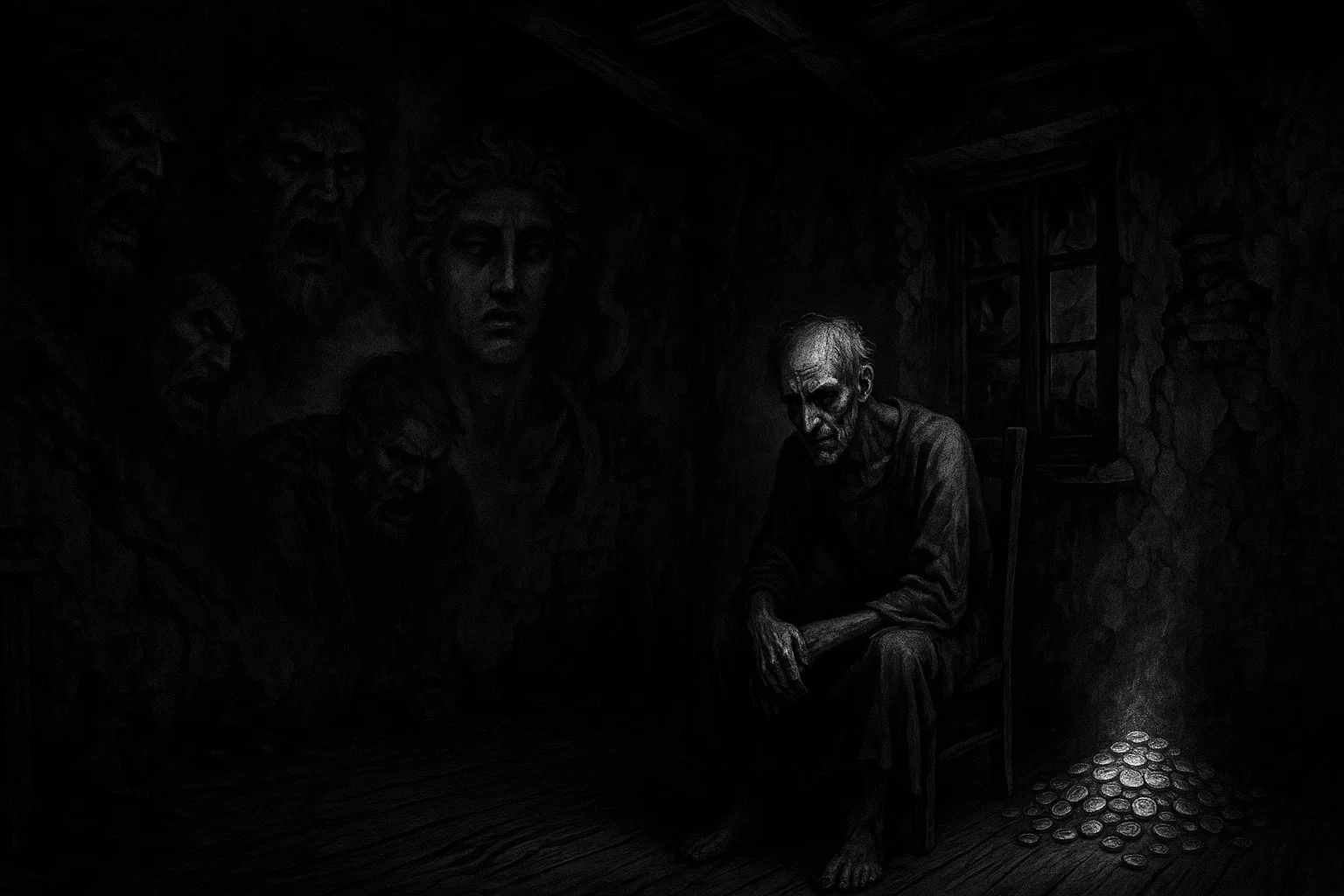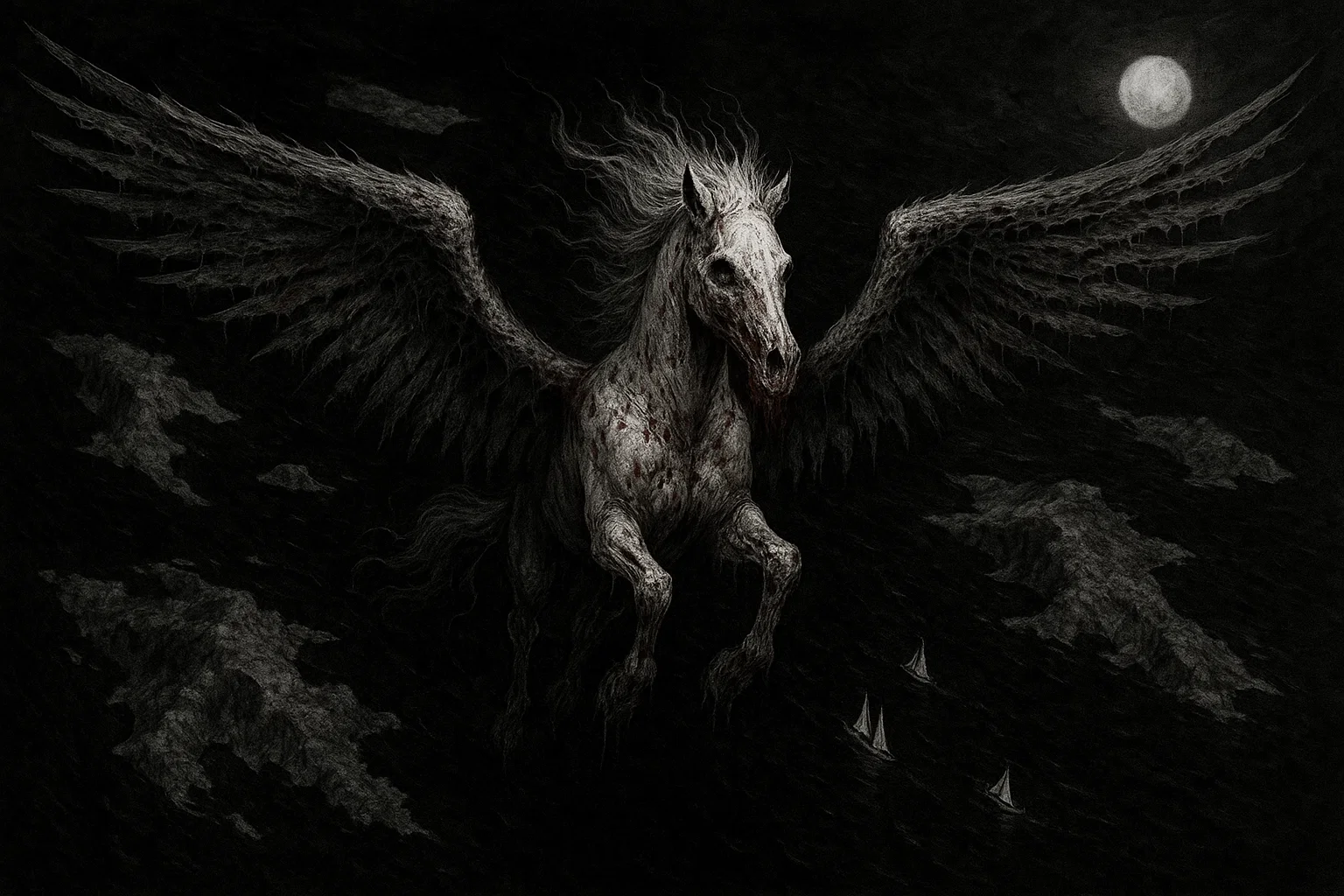The Gold of Tolosa, a legendary hoard of gold and silver, is steeped in tales of greed, betrayal, and a chilling curse that has haunted history for centuries.
Seized in 106 BC by Roman proconsul Quintus Servilius Caepio from the Gaulish town of Tolosa (modern-day Toulouse, France), this treasure is believed to have been plundered from the sacred sanctuary of Delphi in 280 BC.
The curse is said to have brought ruin to Caepio, his family, and others linked to the treasure, including Marcus Junius Brutus, a key figure in Julius Caesar’s assassination. From catastrophic military defeats to mysterious deaths, the Gold of Tolosa curse remains a captivating mystery.
Summary
What Is the Gold of Tolosa?
The Gold of Tolosa is a massive hoard of gold and silver, estimated at 15,000 talents (about 450,000 kilograms) or 100,000 pounds of gold and 110,000 pounds of silver.
Taken by Quintus Servilius Caepio in 106 BC from the Volcae Tectosages, a Gaulish tribe in modern-day Toulouse, France, it was likely stored in sacred lakes or groves.
Some believe it came from the Gauls’ raid on Delphi in 280 BC, a holy site dedicated to Apollo, while others argue it was local Gaulish wealth, as Gaul was rich in gold deposits.
The treasure’s curse is said to bring misfortune, death, and ruin to those who possess it, earning its place among history’s most notorious cursed treasures.
You May Also Like: Amdusias: Why This Demon’s Music Echoes in Hell
Gold of Tolosa Haunted History
The history of the Gold of Tolosa is a chilling saga of greed, sacrilege, and relentless tragedy, woven with dark events that suggest a supernatural curse.
From its origins in a desecrated holy sanctuary to the violent fates of those who dared possess it, the treasure’s story is marked by bloodshed, betrayal, and eerie coincidences.
Sacrilege at Delphi
In 280 BC, the Gauls, led by their chieftain Brennus, launched a daring invasion of Greece, targeting Delphi, the revered sanctuary of Apollo, god of prophecy and light. This sacred site housed vast riches—gold statues, silver offerings, and jeweled artifacts donated by worshippers across the Greek world.
The Gauls plundered these treasures in a chaotic raid, defiling the temple’s sanctity.
Ancient historian Justin describes how Brennus, emboldened by ambition, mocked Apollo’s oracle, only to face divine omens: sudden earthquakes shook the ground, thunderbolts struck the Gaulish ranks, and a fierce snowstorm battered their retreat.
Brennus himself was gravely wounded in battle, later succumbing to his injuries or, as some sources claim, taking his own life in despair. Thousands of Gauls perished, their bodies scattered across the rugged slopes of Mount Parnassus.
The surviving treasure was carried back to Tolosa (modern-day Toulouse, France), where the Volcae Tectosages hid it in sacred lakes and groves, believed to be under Apollo’s protection.
Ancient sources, such as Strabo, note that these sites were guarded by druidic rituals, imbuing the gold with spiritual significance. The act of plundering Delphi, a grave sacrilege, is seen as the curse’s origin.
The Gauls’ misfortunes—storms, deaths, and Brennus’ demise—were interpreted as Apollo’s wrath, setting a precedent for the treasure’s cursed legacy. This initial desecration planted the seeds of divine retribution, which would haunt all who touched the gold.
Caepio’s Sacrilegious Theft
In 106 BC, Quintus Servilius Caepio, a Roman proconsul known for his ruthless ambition, conquered Tolosa during Rome’s campaign against the Volcae Tectosages.
He discovered the Gold of Tolosa, estimated at 15,000 talents (approximately 450,000 kilograms) of gold and silver, hidden in sacred lakes and groves. These sites, likely used for druidic ceremonies, were considered inviolable.
Caepio’s seizure of the treasure was a blatant act of sacrilege, as he desecrated these holy places to claim the wealth for Rome—and possibly himself.
Ancient sources, like Orosius, describe how Caepio’s men dredged the lakes, uncovering gold bars and silver vessels, some inscribed with Greek markings hinting at their Delphic origins.
Caepio ordered the treasure sent to Massilia (modern Marseille) for transport to Rome. However, the convoy was ambushed in a remote area, and all guards were slaughtered with chilling brutality.
Reports from ancient texts, such as Cassius Dio, describe the scene as gruesome, with some guards’ bodies mutilated in ways suggesting ritualistic intent—deep gashes and severed limbs arranged in patterns.
The entire hoard vanished, and Caepio faced accusations of orchestrating the theft to keep the gold. No culprits were ever found, and the loss of such immense wealth shocked Rome.
The massacre’s savagery and the gold’s mysterious disappearance fueled whispers of a curse, as if Apollo or the spirits of the Gauls sought vengeance for the renewed sacrilege.
Catastrophe at Arausio
On October 6, 105 BC, Caepio commanded Roman forces at the Battle of Arausio (near modern Orange, France) against the Cimbri and Teutones, fierce Germanic tribes.
His arrogance and refusal to coordinate with co-commander Gnaeus Mallius Maximus led to a catastrophic defeat, one of Rome’s worst. Between 70,000 and 120,000 Roman soldiers perished, their bodies clogging the Rhone River in a gruesome spectacle.
Ancient sources, like Livy, describe the aftermath: blood-soaked waters, scattered weapons, and abandoned camps.
Survivors reported eerie omens before the battle—thick mists enveloped the Roman lines, and haunting cries echoed at night, unnerving the troops. Some soldiers claimed to see shadowy figures moving in the fog, though these accounts were dismissed as panic.
Romans widely believed the defeat was divine punishment for Caepio’s theft of the sacred gold. The scale of the loss—rivaling the disaster at Cannae—shook the Republic, and public outrage turned against Caepio.
The curse narrative gained traction, as the timing of the defeat, so soon after the gold’s seizure, seemed too coincidental. The omens and the battle’s brutality suggested a supernatural force, perhaps Apollo’s wrath or the vengeful spirits of the Gauls, targeting Caepio for his hubris.
You May Also Like: The Mapinguari: Did a Prehistoric Beast Survive in the Amazon?
Caepio’s Ruin and Exile
After Arausio, Caepio’s fall was swift and brutal. He was tried by the Roman Senate for military incompetence and suspected embezzlement of the gold. He was fined 15,000 talents, a sum so vast it was impossible to pay, equivalent to billions in modern terms.
Stripped of his citizenship, Caepio was exiled to Smyrna (modern Izmir, Turkey), where he lived in poverty and isolation. Ancient accounts, such as those by Strabo, describe his final years as wretched; he was shunned by locals and reportedly plagued by nightmares.
Some sources claim he spoke of being “haunted” by guilt or unseen forces, muttering about “shadows” following him. His death, likely around 104 BC, was unremarkable yet pitiful, a stark contrast to his former power.
This rapid descent from proconsul to outcast was seen as the curse’s work.
The fine’s enormity, coupled with his isolation and reported mental anguish, suggested more than political fallout. Romans whispered that Apollo or the gold’s guardians had cursed Caepio, ensuring his ruin for defiling sacred wealth.
Generational Tragedies
The curse’s reach extended to Caepio’s family, striking across generations with relentless misfortune.
His son, Quintus Servilius Caepio Jr., met a violent end in 90 BC during the Social War, a conflict between Rome and its Italian allies. Lured into a trap by Quintus Poppaedius Silo, a Marsic leader, Caepio Jr. was ambushed in a narrow pass in central Italy.
His forces were slaughtered, and ancient sources describe the scene as horrific, with bodies hacked apart and left unburied. Caepio Jr.’s death was seen as another manifestation of the curse, as the ambush’s precision and brutality echoed the convoy massacre of 106 BC.
Caepio’s grandson, whose name is lost to history, died young in the early 1st century BC from a sudden illness. Ancient records are vague, but the death was abrupt, with rumors of fever and delirium. This mysterious loss, without clear cause, added to the curse’s mystique.
The most infamous victim was Marcus Junius Brutus, Caepio’s great-grandson, who joined the conspiracy to assassinate Julius Caesar on March 15, 44 BC.
The murder plunged Rome into civil war, and Brutus faced relentless pursuit by Mark Antony and Octavian. At the Battle of Philippi in October 42 BC, Brutus’ forces were defeated, and he took his own life by running onto his sword.
Ancient sources note his remorse, with Brutus reportedly saying, “A shadow hangs over my line,” hinting at the curse. His suicide, in the face of defeat, was seen as the curse’s final blow.
Bizarre and Unexplained Incidents
Beyond Caepio’s family, others linked to the treasure faced eerie fates. The 106 BC convoy massacre stood out for its savagery; the guards’ bodies were reportedly arranged in a circle, with some showing wounds suggestive of ritual sacrifice.
This detail, recorded by Cassius Dio, unnerved Romans, who saw it as a sign of supernatural vengeance. During the Social War, Lucius Porcius Cato, a political ally of Caepio’s family, died in 89 BC when a stone arch collapsed on him during a military campaign in Italy.
The accident was bizarre, as the structure was reportedly stable, and contemporaries noted no earthquake or structural failure. Cato’s death was whispered to be the curse’s work, targeting those close to Caepio.
In 91 BC, another associate, Gnaeus Pompeius Strabo, narrowly escaped death when lightning struck his camp, killing several soldiers and burning supplies.
Though Strabo survived, the incident was seen as ominous, linked to his ties with Caepio’s faction. These scattered but chilling events—massacres, freak accidents, and near-misses—reinforced the belief that the Gold of Tolosa carried a malevolent force, punishing all who came near it.
You May Also Like: The Eery Story of Edward Mordrake | Horror Story
Gold of Tolosa Curse Manifestations
The Gold of Tolosa curse manifests through documented tragedies, primarily affecting Caepio and his descendants:
| Event | Date | Location | Description |
|---|---|---|---|
| Seizure of Gold | 106 BC | Tolosa, Gaul | Caepio takes treasure from sacred sites. |
| Convoy Ambush | 106 BC | Near Massilia | Guards killed, gold vanishes. |
| Battle of Arausio | October 6, 105 BC | Arausio, Gaul | 70,000–120,000 Romans killed. |
| Caepio’s Exile | After 105 BC | Smyrna | Fined, exiled, dies in disgrace. |
| Caepio Jr.’s Death | 90 BC | Italy | Ambushed, killed in Social War. |
| Grandson’s Death | Early 1st century BC | Unknown | Dies from sudden illness. |
| Caesar’s Assassination | March 15, 44 BC | Rome | Brutus joins plot, kills Caesar. |
| Brutus’ Death | October 42 BC | Philippi, Macedonia | Brutus commits suicide after defeat. |
| Guards’ Massacre | 106 BC | Near Massilia | Guards brutally slain. |
| Cato’s Death | 89 BC | Italy | Crushed by falling masonry. |
| Cultural Legacy | Ongoing | Global | Curse referenced in stories, proverbs. |
Theories
The Gold of Tolosa curse has long puzzled historians, scholars, and paranormal enthusiasts, prompting a range of theories to explain the relentless tragedies tied to the treasure.
Below, we explore new and specific theories, divided into paranormal and rational perspectives, each tailored to the unique events of the Gold of Tolosa—from the ambush of the convoy in 106 BC to the generational misfortunes of Quintus Servilius Caepio and his descendants, including Marcus Junius Brutus.
Curse of the Volcae Tectosages’ Ancestral Guardians
Fit: The Volcae Tectosages, who safeguarded the treasure in Tolosa’s sacred lakes, likely revered their ancestors as spiritual protectors. Ancient Celtic beliefs held that ancestral spirits could curse those who violated sacred sites.
The brutal ambush of the convoy in 106 BC, where guards were killed with ritualistic precision, could reflect the wrath of these guardians, angered by Caepio’s desecration.
The subsequent tragedies—such as the Battle of Arausio’s catastrophic loss and Brutus’ suicide—might indicate these spirits pursued Caepio’s lineage across generations, ensuring no one profited from the stolen gold. The eerie arrangement of the guards’ bodies in a circle, as noted in historical accounts, suggests a ceremonial act, aligning with Celtic spiritual practices.
Limitations: No direct evidence confirms ancestral spirits or their ability to curse. The ambush’s ritualistic elements could be exaggerated by ancient sources, and the misfortunes may stem from unrelated historical events. Celtic beliefs are poorly documented, making this theory speculative.
You May Also Like: Cedarhurst Mansion Haunting: Huntsville’s Most Famous Ghost?
Malediction from a Delphic Oracle
Fit: The oracle at Delphi, Apollo’s mouthpiece, was renowned for cryptic prophecies that often foretold doom for those who defied the gods. Before the Gauls’ raid in 280 BC, the oracle might have pronounced a malediction on the treasure, dooming anyone who stole it.
Caepio’s seizure of the gold in 106 BC, followed by the convoy’s destruction and his family’s downfall, could reflect this prophecy’s fulfillment.
The sudden deaths, like Caepio’s grandson’s mysterious illness, and the eerie omens before Arausio (e.g., nocturnal cries) align with the oracle’s reputation for foretelling inescapable fates. Ancient Greeks believed such prophecies carried divine power, binding the treasure to misfortune.
Limitations: No specific record of a Delphic prophecy tied to the gold exists. Prophecies were often vague, and attributing specific events to them is interpretive. The tragedies could be explained by human errors or political conflicts, not divine pronouncements.
Spiritual Contamination from Sacred Lakes
Fit: The gold was stored in Tolosa’s sacred lakes, sites of druidic rituals believed to connect the physical and spiritual worlds. Disturbing these waters may have unleashed a spiritual contamination, tainting the treasure with negative energy.
The convoy ambush’s savagery, Caepio’s mental anguish in exile (where he spoke of “shadows”), and the generational tragedies suggest a lingering malevolence tied to the lakes’ desecration.
Ancient Celtic traditions viewed water as a gateway to the divine, and violating it could invoke supernatural consequences, explaining the persistent misfortunes.
Limitations: Spiritual contamination is a metaphysical concept, unsupported by concrete evidence. The lakes’ sacred status is based on limited accounts, and the tragedies could result from mundane causes like war or disease.
Strategic Sabotage by Rival Roman Factions
Fit: Rome’s political landscape in the late 2nd century BC was rife with factionalism, and Caepio’s rising power as proconsul made him a target.
Rivals, such as supporters of Gnaeus Mallius Maximus, may have orchestrated the convoy ambush in 106 BC to discredit Caepio, framing it as a curse to amplify his disgrace.
The Battle of Arausio’s defeat could have been exacerbated by deliberate miscommunication among rival commanders, ensuring Caepio’s failure.
The subsequent exile and his family’s misfortunes, like Caepio Jr.’s ambush in 90 BC, might reflect ongoing vendettas by powerful families like the Metelli, who sought to eliminate Caepio’s influence. This explains the targeted nature of the tragedies without invoking the supernatural.
Limitations: No direct evidence proves sabotage by rivals. The ambush’s scale and the guards’ brutal deaths suggest more than political intrigue, possibly banditry or local resistance. The generational scope of the misfortunes is harder to attribute solely to factionalism.
Local Gaulish Resistance
Fit: The Volcae Tectosages or other Gaulish tribes may have organized the convoy ambush in 106 BC as an act of resistance against Roman conquest. The treasure, stored in sacred sites, was a symbol of their cultural identity.
Local warriors, possibly guided by druids, could have attacked the convoy, killed the guards, and hidden the gold to prevent Roman exploitation.
The ritualistic wounds on the guards’ bodies might reflect Gaulish warrior traditions, mistaken by Romans as supernatural. Caepio’s later defeats, like Arausio, and his family’s woes could be seen as indirect consequences of ongoing Gaulish hostility, with the “curse” narrative emerging to explain Rome’s struggles in the region.
Limitations: No records confirm Gaulish involvement in the ambush beyond speculation. The generational tragedies, such as Brutus’ death in 42 BC, are too distant from Gaulish resistance to be directly linked. The curse’s cultural impact suggests a broader explanation.
Mass Hysteria and Superstition
Fit: In the superstitious Roman Republic, the gold’s disappearance and Arausio’s defeat may have sparked mass hysteria, with Romans attributing events to a curse.
This belief could have pressured Caepio’s family, leading to paranoia and poor decision-making. For example, Brutus’ involvement in Caesar’s assassination might reflect a desperate attempt to restore his family’s honor, influenced by the curse’s stigma.
Public perception, amplified by priests and orators, could have turned isolated incidents—like the convoy ambush or Cato’s freak accident in 89 BC—into a cohesive curse narrative, perpetuating fear and misfortune.
Limitations: Mass hysteria explains the curse’s cultural spread but not the specific events, like the ambush’s brutality or the precise targeting of Caepio’s lineage. Some tragedies predate widespread curse beliefs, weakening this theory’s explanatory power.
You May Also Like: Is The Anguished Man Painting Truly Cursed?
Gold of Tolosa vs Other Cursed Objects
The Gold of Tolosa shares traits with other cursed objects, but its ancient origins and generational scope are unique:
| Cursed Object | Origin | Manifestations | Current Status |
|---|---|---|---|
| Hope Diamond | India, 17th century | Bankruptcy, madness, deaths (e.g., Louis XVI). | Smithsonian Institution |
| Koh-i-Noor Diamond | India, 13th century | Male owners faced defeats, deaths. | British Crown Jewels |
| Tutankhamun’s Tomb | Egypt, 1323 BC | Excavators died mysteriously. | Cairo Museum |
| Dybbuk Box | Unknown, 20th century | Hauntings, illnesses, bad luck. | Privately owned |
| Annabelle Doll | USA, 1970s | Paranormal attacks. | Warrens’ Occult Museum |
| The Crying Boy Painting | UK, 1950s | Survived fires, linked to destruction. | Copies exist |
| Robert the Doll | USA, 1904 | Misfortunes, hauntings. | Fort East Martello Museum |
| Busby Stoop Chair | UK, 1702 | Sitters died quickly. | Harry Strangeways Inn |
| Black Prince’s Ruby | Asia, 14th century | Battles, executions. | British Crown Jewels |
| The Conjured Chest | USA, 19th century | Family deaths, disappearances. | Unknown |
| Delhi Purple Sapphire | India, 1857 | Financial ruin, illness. | Natural History Museum |
| Ötzi’s Curse | Italy, 3300 BC | Researchers’ deaths. | South Tyrol Museum |
| James Dean’s Porsche | USA, 1955 | Fatal accidents. | Destroyed |
The Gold of Tolosa is distinct for its massive scale and historical impact, unlike objects tied to individual owners.
What Happened to the Gold of Tolosa?
The fate of the Gold of Tolosa, the vast hoard of gold and silver seized by Quintus Servilius Caepio in 106 BC, remains one of history’s enduring mysteries.
After Caepio took the treasure from the Volcae Tectosages in Tolosa (modern-day Toulouse, France), it was sent toward Massilia (modern Marseille) for transport to Rome.
However, the convoy was ambushed, the guards brutally slain, and the entire hoard vanished without a trace. Ancient sources, such as Orosius, suggest Caepio may have orchestrated the theft, hiding the gold for personal gain, though no evidence supports this claim.
Others propose the Volcae Tectosages or local Gauls reclaimed it, secreting it back into sacred lakes or groves to protect it from Roman hands, possibly guided by druidic rituals.
Some historians speculate the gold was melted down or scattered, as no significant artifacts matching its description have been found.
Is Gold of Tolosa Curse Real?
The Gold of Tolosa curse remains a mystery. Historical records detail the tragedies, from Arausio’s slaughter to Brutus’ suicide, but rational explanations—politics, coincidence, economic strain—cover much ground.
Yet, the convoy ambush’s brutality and the gold’s disappearance defy easy answers, fueling paranormal theories of divine or druidic curses.
The treasure’s fate is unknown, possibly hidden or melted down. Its legend endures as a warning against greed and sacrilege, captivating those drawn to ancient mysteries.
Whether cursed or not, the Gold of Tolosa remains a haunting tale of wealth and tragedy.







